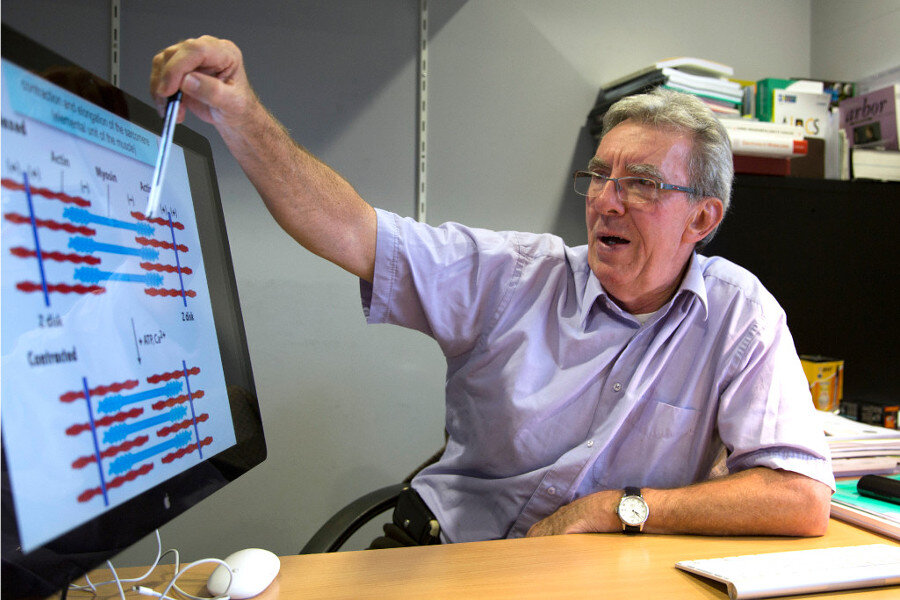Three scientists win Nobel Prize in chemistry for molecular machines
Loading...
Alfred Nobel wanted the prizes that bear his name to recognize achievements that offered the “greatest benefit to mankind.” The world’s tiniest machines — celebrated in this year’s chemistry prize — may revolutionize daily life.
The Royal Swedish Academy of Sciences on Wednesday awarded the final Nobel prize in sciences for 2016. The 8 million kronor ($930,000) chemistry prize went to Jean-Pierre Sauvage of France, British-born Sir Fraser Stoddart, and Bernard “Ben” Feringa of the Netherlands. The scientists were recognized for their breakthroughs on molecular machines, which began with Dr. Sauvage linking two ring-shaped molecules in 1983.
For the awarding committee, these machines are “at the same stage as the electric motor was in the 1830s,” when its potential was clear but before anyone knew how it would be used. Researchers have speculated about the uses of the technology for years.
As Laurent Belsie reported for The Christian Science Monitor in 2000:
By building machines and materials with atomic precision, researchers believe they'll create faster computers, lighter spacecraft, and airplane wings so efficient they'll adjust to airflow like a flexible skin. Medical robots would snatch a page from science fiction's "Fantastic Voyage" and travel through the body fixing things. Computer components the size of a molecule could put a supercomputer into the palm of your hand.
Molecular machines can be one-thousandth the width of a human hair. When energy is added, they can perform designated tasks and even be controlled.
A 2014 study described a “molecular superlattice” researchers had built, which rotated when under pressure. Hydrogen bonds functioned as hinges, allowing up to 23 degrees of movement.
Such discoveries were made possible, the awarding committee said, by the work of the three Nobel prize recipients. After Sauvage's chain of ring-shaped molecules in 1983 came Sir Fraser's 1991 production of “a molecular rod and ring that fit together snugly. As he told the Monitor, "We realized we were on our way to building something that could be a molecular abacus.... We started to see the beginnings of molecular designs."
In 1999, Professor Feringa set a molecular rotor blade spinning continuously in one direction, developing the first molecular motor.
The three men were understandably emotional about the win. Feringa, a professor of organic chemistry at the University of Groningen, Netherlands, told reporters calling from Stockholm that he was “a bit shocked” and “so honored.”
Sauvage, professor emeritus at the University of Strasbourg and director of research emeritus at France’s National Center for Scientific Research, said, “The Nobel Prize is something very special, it’s the most prestigious prize, the one most scientists don’t even dare to dream of in their wildest dreams.”
What next for the researchers — and for molecular machines? Feringa says there are “endless opportunities” to use the technology. He has developed a “nanocar” with four molecular wheels, while Stoddart has produced an infinitesimal computer chip with 20 kB of memory.
Some are concerned that the tiny technology may also create space for threats. The balance between moving forward on technology and safeguarding security has been debated since at least 2000, as The Christian Science Monitor reported.
“Wing sensors could easily become invisible listening devices. Tiny robots that manipulate atoms could carry designer viruses into the battlefield or a public building.”
The federal government is already involved in researching and regulating nanotechnologies. The National Nanotechnology Initiative has invested nearly $24 billion in research and development since 2001.
The tiny machines have the potential to capture the imaginations of young scientists, too. “Children are going to love it,” Donna Nelson, president of the American Chemical Society, told the Associated Press.








